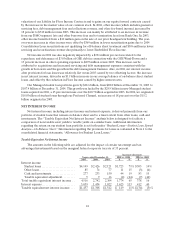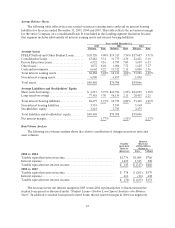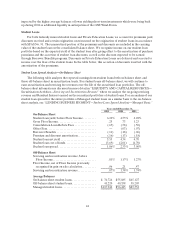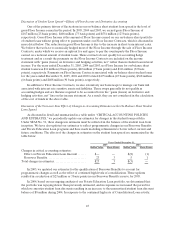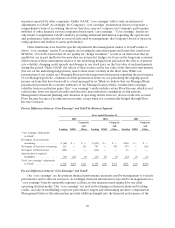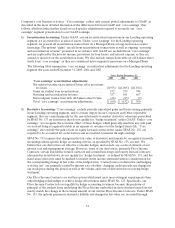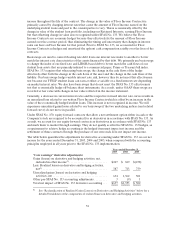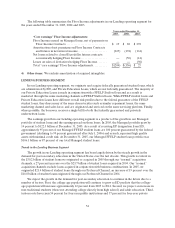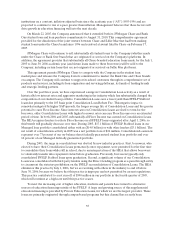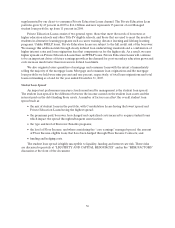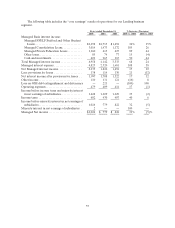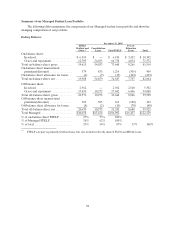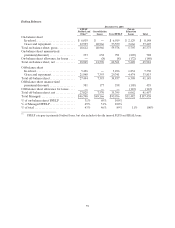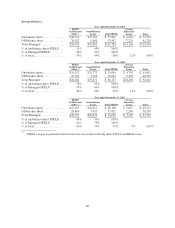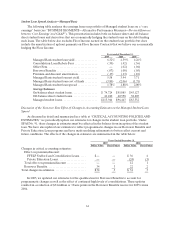Sallie Mae 2005 Annual Report Download - page 61
Download and view the complete annual report
Please find page 61 of the 2005 Sallie Mae annual report below. You can navigate through the pages in the report by either clicking on the pages listed below, or by using the keyword search tool below to find specific information within the annual report.
51
Company’s core business activities. ‘‘Core earnings’’ reflect only current period adjustments to GAAP, as
described in the more detailed discussion of the differences between GAAP and ‘‘core earnings’’ that
follows, which includes further detail on each specific adjustments required to reconcile our ‘‘core
earnings’’ segment presentation to our GAAP earnings.
1) Securitization Accounting: Under GAAP, certain securitization transactions in our Lending operating
segment are accounted for as sales of assets. Under “core earnings” for the Lending operating
segment, we present all securitization transactions on a Managed Basis as long-term non-recourse
financings. The upfront “gains” on sale from securitization transactions as well as ongoing “servicing
and securitization revenue” presented in accordance with GAAP are excluded from “core earnings”
and are replaced by the interest income, provisions for loan losses, and interest expense as they are
earned or incurred on the securitization loans. We also exclude transactions with our off-balance sheet
trusts from “core earnings” as they are considered intercompany transactions on a Managed Basis.
The following table summarizes “core earnings” securitization adjustments for the Lending operating
segment the years ended December 31, 2005, 2004 and 2003.
Years Ended December 31,
2005 2004 2003
“Core earnings” securitization adjustments:
Net interest income on securitized loans, after provisions
forlosses ....................................... $ (935) $ (1,065) $ (1,104)
Gains on student loan securitizations................. 552 375 744
Servicingand securitization revenue.................. 357 561 667
Intercompany transactions with off-balance sheet trusts. (34) (23) (7)
Total “core earnings” securitization adjustments ....... $ (60) $ (152) $ 300
2) Derivative Accounting: “Core earnings” exclude periodic unrealized gains and losses arising primarily
in our Lending operating segment, and to a lesser degree in our Corporate and Other reportable
segment, that are caused primarily by the one-sided mark-to-market derivative valuations prescribed
by SFAS No. 133 on derivatives that do not qualify for “hedge treatment” under GAAP. Under “core
earnings,” we recognize the economic effect of these hedges, which generally results in any cash paid
or received being recognized ratably as an expense or revenue over the hedged item’s life. “Core
earnings” also exclude the gain or loss on equity forward contracts that under SFAS No. 133, are
required to be accounted for as derivatives and are marked-to-market through earnings.
SFAS No. 133 requires that changes in the fair value of derivative instruments be recognized currently
in earnings unless specific hedge accounting criteria, as specified by SFAS No. 133, are met. We
believe that our derivatives are effective economic hedges, and as such, are a critical element of our
interest rate risk management strategy. However, some of our derivatives, primarily Floor Income
Contracts, certain Eurodollar futures contracts and certain basis swaps and equity forward contracts
(discussed in detail below), do not qualify for “hedge treatment” as defined by SFAS No. 133, and the
stand-alone derivative must be marked-to-market in the income statement with no consideration for
the corresponding change in fair value of the hedged item. “Gains (losses) on derivative and hedging
activities, net” are primarily caused by interest rate volatility, changing credit spreads and changes in
our stock price during the period as well as the volume and term of derivatives not receiving hedge
treatment.
Our Floor Income Contracts are written options which must meet more stringent requirements than
other hedging relationships to achieve hedge effectiveness under SFAS No. 133. Specifically, our
Floor Income Contracts do not qualify for hedge accounting treatment because the paydown of
principal of the student loans underlying the Floor Income embedded in those student loans does not
exactly match the change in the notional amount of our written Floor Income Contracts. Under SFAS
No. 133, the upfront payment is deemed a liability and changes in fair value are recorded through



